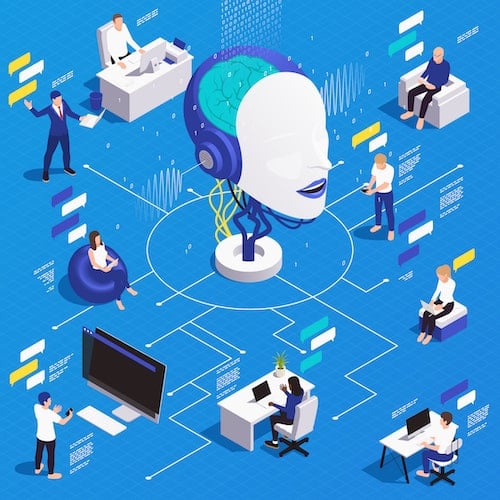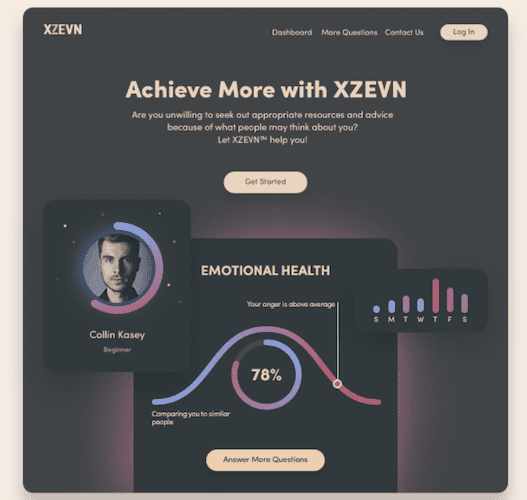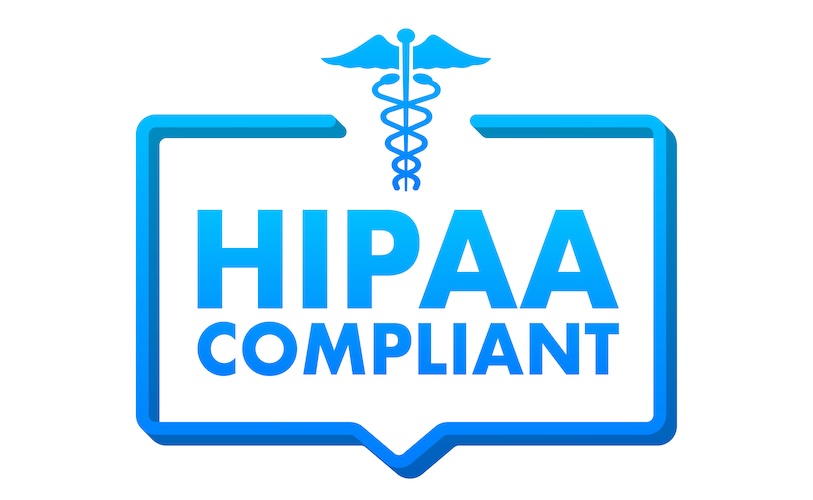The evolution of AI, machine learning, and big data analytics has propelled healthcare apps beyond conventional limits, providing advanced tools for diagnostics, monitoring, and treatment. Whether through telemedicine apps supporting remote patient monitoring or AI-driven diagnostic tools for early disease detection, Conversational AI is quickly emerging as a transformative force in the healthcare sector.
Top Takeaways:
- Conversational AI in the healthcare sector is revolutionizing the way doctors, nurses, and other medical staff interact with patients, from streamlining appointment scheduling to personalized health plan creation. This technology not only enhances patient engagement but also significantly reduces the administrative burden on healthcare professionals, making it a critical tool for modern healthcare providers.
- The evolution of conversational AI for the healthcare industry, powered by advancements in NLP, NLU, and NLG, signifies a leap towards more natural, human-like interactions. This transformation not only enhances the benefits of conversational AI but also promises a future where technology seamlessly integrates into patient care, offering an unparalleled experience.
- Can conversational AI be implemented in healthcare? Absolutely, but it demands a nuanced approach. Despite challenges like data security and ensuring accuracy, the potential to help patients and support care providers is immense.
Table of Contents
- How It Started and Where It’s Headed.
- What Are The Capabilities of Conversational AI Technology in Healthcare?
- Technologies Behind Conversational AI
- The Role of Machine Learning and Artificial Intelligence
- Conversational AI Use Cases in Healthcare
- How Conversational AI Interfaces with Existing Healthcare Systems
- Challenges of Conversational AI in Healthcare
- Benefits of Conversational AI for Healthcare Providers and Patients
- How to implement conversational AI for your platform
- How Topflight Turns Conversational AI into Clinic-Grade Tools
- Future of Conversational AI in Healthcare
How It Started and Where It’s Headed
In the early days of computing, computer scientists, researchers, and engineers embarked on a mission to make computers talk like humans. Fast forward to the ’60s, and we got ELIZA, a program designed to mimic a Rogerian psychotherapist in text-based conversations.
A few decades later, things picked up speed in the AI arena, especially with strides in machine learning and NLP techniques. Rule-based systems got an upgrade – think statistical methods and full-fledged machine learning algorithms. Plus, the internet boom and the flood of big data played a big part in fine-tuning language models, making our conversational tools and chatbots in healthcare more clued into context.
Recent years have been nothing short of groundbreaking, especially with deep learning models like OpenAI’s GPT (Generative Pre-trained Transformer) taking center stage. These models leverage vast amounts of data and computing power to understand and generate human-like text.
This technology isn’t just hype – it’s found in applications ranging from virtual assistants and chatbots to tools for automating repetitive tasks for healthcare providers. The potential impact for patients is extensive, providing 24/7 assistance for symptom management, appointment scheduling, and mental health support. As technology evolves, medical conversational AI promises to reshape patient experiences and redefine what high-quality healthcare systems look like.
What Are The Capabilities of Conversational AI Technology in Healthcare?
- Appointment Scheduling: Patients can now interact in real-time with chatbots or virtual assistants to book appointments, reschedule visits, or inquire about availability round the clock.
- Medication Management: Virtual assistants equipped with conversational AI capabilities assist patients in managing their medications. They send medication reminders, dosage information, potential side effects, and answer questions.
- Remote Monitoring: Patients can share relevant health information, such as vital signs or symptoms, enabling healthcare providers to conduct virtual follow-ups, assess patient conditions, and intervene if necessary. AI tools can also analyze patient data, such as blood pressure and heart rate, and alert providers to abnormalities.
- Administrative Task Automation: Beyond patient-facing applications, using conversational AI can do wonders by automating routine administrative tasks like billing, insurance, and general administrative processes.
- Health Information Access: Holistic healthcare conversational AI tools provide a user-friendly interface for accessing health information. Patients can inquire about medical conditions, treatment options, and general health advice through human-like interactions. If you have ides for leveraging ChatGPT in healthcare, reach out for advice.
- Customized Health Plans: Some healthcare organizations leverage conversational AI to create personalized health plans. By analyzing patient data and preferences, these systems offer tailored recommendations.
- Enhanced Patient Engagement: By implementing conversational AI technology in healthcare, organizations can significantly enhance patient engagement. These AI systems are adept at handling a high volume of phone calls and frequently asked questions, freeing up human resources to focus on more complex queries and improving the overall patient experience. This not only streamlines communication but also ensures that patients feel heard and supported at every step of their healthcare journey.
Technologies Behind Conversational AI
As technology advances, the gap between human-like interaction and conversational AI is expected to narrow, ushering in more sophisticated and engaging interactions across diverse domains. Natural Language Processing (NLP), including Natural Language Understanding (NLU) and Natural Language Generation (NLG), stands at the forefront of this evolution.
Natural Language Processing (NLP):
Natural Language Processing (NLP) bridges the gap between computers and human languages. Its primary objective is to equip machines with the capability to comprehend, interpret, and generate human language with both meaning and context.
Natural Language Understanding (NLU):
Conversational AI systems leverage sophisticated Natural Language Understanding (NLU) algorithms to grasp and interpret human language intricacies, including context, semantics, and user intent.
Natural Language Generation (NLG):
Conversational AI goes beyond understanding user input—it needs to craft responses that feel natural and contextually fitting through a process called Natural Language Generation (NLG). The ultimate goal is to create conversational AI systems that transcend basic question-and-answer exchanges, and instead resemble human conversations.
Discover how generative AI for pharma is transforming drug discovery and patient care in the pharmaceutical industry.
In addition to the revolutionary technologies of NLP, NLU, and NLG, the role of generative AI in shaping conversational AI for healthcare cannot be overstated. Generative AI in healthcare has the potential to further personalize and enhance patient interactions by generating human-like responses tailored to individual patient needs and histories. This aspect of AI technology was particularly crucial in the context of the COVID-19 pandemic, when the demand for digital health services surged immediately. As conversational AI can be implemented in healthcare, it becomes a pivotal tool in managing patient queries, providing consistent information, and reducing the strain on healthcare systems. This evolution signifies a leap towards not just automating tasks but truly enhancing patient care and engagement.
Discover how we leverage cutting-edge Generative AI technology to empower healthcare providers and enhance patient care.
The Role of Machine Learning and Artificial Intelligence
Machine Learning (ML) and Artificial Intelligence (AI) are foundational to the capabilities of conversational AI systems. ML empowers the system to understand language and user intent, while AI contributes to context management, dynamic dialogue flow, personalization, emotion recognition, and multimodal interaction. The synergy between these technologies enables conversational AI to evolve, offering more natural and human-like interactions in diverse applications.
Machine Learning (ML):
Training Models: ML plays a crucial role in training models for conversational AI. Through supervised learning, models are exposed to vast datasets containing examples of human language and interactions. This enables them to learn patterns, recognize intents, and understand the nuances of language.
Intent Recognition: ML algorithms are employed for intent recognition, a key aspect of conversational AI. By analyzing user inputs, ML models determine the user’s intention, allowing the system to provide relevant and accurate responses.
Adaptive Learning: ML enables conversational AI systems to adapt and improve over time. Through continuous exposure to new data and user interactions, the models can adjust, refine, and enhance their performance, making them more effective in understanding and responding to diverse inputs.

As we stand on the brink of a new era in healthcare, the role of machine learning in healthcare is undeniably transformative. Through its ability to digest and learn from vast amounts of data, machine learning is not just shaping the future of conversational AI but is fundamentally changing how we approach patient care, diagnosis, and treatment.
Artificial Intelligence (AI):
Context Management: AI-powered algorithms, particularly those related to contextual awareness, are vital for managing the flow of conversations. Conversational AI relies on AI techniques to maintain context, remember previous interactions, and understand evolving conversations.
Dynamic Dialogue Flow: AI is instrumental in creating dynamic dialogue flows. Conversations are not linear, and AI helps in managing the unpredictability of human interactions. This involves recognizing shifts in topics, handling interruptions, and ensuring a more natural conversation.
Personalization: AI enables conversational AI systems to personalize interactions based on user preferences, history, and feedback. Through machine learning, AI models can analyze user behavior and tailor responses, contributing to a more user-centric and adaptive conversation.
Emotion Recognition: Advancements in AI contribute to the recognition of user emotions in conversational AI. While still evolving, AI models are being developed to detect emotional cues in user inputs, allowing the system to respond with empathy and sensitivity.
Multimodal Integration: AI technology facilitates the integration of multimodal elements, such as images, gestures, and expressions into conversational interfaces. This broader scope of interaction enhances the richness of communication, making it more like human conversations.
Conversational AI Use Cases in Healthcare
Here are a few conversational AI use cases in healthcare worth checking out:
Mayo Clinic’s First-Aid Skill:
Mayo Clinic introduced a First-Aid skill for Amazon’s Alexa. Users can ask Alexa about common health concerns, and the skill provides advice based on Mayo Clinic’s medical expertise. It covers a wide range of topics, from treating minor injuries to offering guidance on when to seek professional medical help.
Sensley’s Empathy-Driven Conversational Platform:
Sensely is revolutionizing patient engagement with its AI-driven avatar. This chatbot employs a multi-sensory approach, blending voice and visuals to interact with patients, making the experience more human-like.
XZEVN Mental Health and Machine Learning:
XZEVN’s application allows users to use voice or text inputs to express their concerns and issues. The system applies machine learning and artificial intelligence (AI) tools to understand and respond to their needs. It reacts like a human listener, providing an environment that is safe and non-judgmental.

We encourage you to learn more about the specifics of healthcare chatbot development in our dedicated blog.
How Conversational AI Interfaces with Existing Healthcare Systems
These interfaces integrate with existing healthcare systems by adopting industry-standard integration protocols, leveraging APIs, adhering to interoperability standards, and prioritizing security and compliance measures. This ensures a cohesive and secure interaction between users, conversational AI, and the broader healthcare ecosystem.
Here’s an overview of how conversational AI for health care seamlessly connects with existing infrastructure:
Integration Protocols:
HL7 (Health Level Seven): Conversational AI systems often leverage HL7. This facilitates the smooth integration with electronic health record (EHR) systems, ensuring compatibility and standardized data exchange.

FHIR (Fast Healthcare Interoperability Resources): Conversational AI interfaces can use FHIR to access patient data, retrieve medical records, and interact with other healthcare applications in a standardized and secure manner.
API Connectivity:
EHR APIs: Through these APIs, conversational AI can retrieve information, update records, and perform other relevant tasks within the healthcare ecosystem.
Appointment Scheduling APIs: Platforms for healthcare organizations often need to be integrated with scheduling systems through dedicated APIs during healthcare app development projects. This integration allows users to schedule appointments, receive reminders, and manage their healthcare-related activities seamlessly.
Diagnostic and Imaging APIs: For applications involving diagnostic results and medical imaging, conversational AI can help. Interfaces can connect with specialized APIs ensuring that relevant diagnostic information is easily accessible.
Interoperability Standards:
SMART on FHIR: This is an emerging standard that combines FHIR with the SMART (Substitutable Medical Apps, Reusable Technologies) platform. It enables the development of healthcare apps, including conversational AI, that can run seamlessly within EHR systems.
CCDA (Consolidated Clinical Document Architecture): Conversational AI interfaces may leverage CCDA for the exchange of clinical documents. This ensures that documents, such as discharge summaries and progress notes, can be shared and interpreted by conversational AI.
Security and Compliance:
HIPAA Compliance: Given the sensitive nature of healthcare data, conversational AI interfaces adhere to strict security and privacy standards (HIPAA) to ensure the confidentiality and integrity of patient information during interactions.

End-to-End Encryption: Conversational AI systems prioritize end-to-end encryption to secure the communication channels between users and healthcare systems. This safeguards patient data and ensures compliance with data protection regulations.
Challenges of Conversational AI in Healthcare
While the benefits are tangible, there are a number of complexities around implementation that require in-depth expertise and knowledge of both healthcare and conversational AI.
Data Security and Privacy Concerns
Handling sensitive healthcare information requires robust security measures and ensuring compliance with healthcare data protection regulations requires extensive technical knowledge.
Accuracy and Reliability
Achieving high accuracy in understanding and responding to user queries is a challenge, especially when dealing with complex medical terminology and diverse patient inputs.
Integration with Existing Systems
Seamless integration of conversational AI solutions with existing systems and electronic health records (EHRs) is challenging. Interoperability is essential for the efficient exchange of information across platforms.
User Adoption and Trust
Gaining user trust and encouraging widespread adoption of conversational AI tools among both healthcare providers and patients continues to improve as perceptions and attitudes change.
Ethical Considerations
Addressing ethical issues, such as accountability for AI-driven decisions, responsible data use, and potential biases in algorithms, requires careful consideration as these technologies see more widespread adoption.
Cybersecurity Considerations
Given the interconnected nature of healthcare systems, cybersecurity is a significant concern. Healthcare app developers need to address cybersecurity risks to protect patient data and ensure the secure functioning of AI applications.
Anonymization and De-identification
Stripping personal identifiers from patient data through anonymization and de-identification processes helps protect privacy. However, it’s important to note that as AI advances, there is a growing awareness of re-identification risks, requiring ongoing vigilance.
Related: Implementing automation in healthcare to improve patient care
Algorithmic Bias and Fairness
Developers must address algorithmic bias to ensure fairness in AI applications. If biases exist in training data during AI app development, they can be perpetuated in AI outputs, potentially leading to unequal treatment.
Benefits of Conversational AI for Healthcare Providers and Patients
Conversational AI in the healthcare field enhances operational efficiency for providers, improves patient engagement, and contributes to a more accessible and personalized healthcare experience. The benefits of adopting conversational AI platforms for healthcare organizations extends to both healthcare professionals and patients, fostering a more efficient and patient-centric ecosystem.
| Benefits for Healthcare Providers | Benefits for Patients |
|
|
Also Read: Cost of implementing AI in healthcare
How to Implement Conversational AI for Your Healthcare Platform:
Implementation involves several key steps to ensure a seamless integration and optimal performance. Here’s an outline to guide you through the process:
- Define Objectives and Use Cases:
Clearly outline the objectives of integrating conversational AI into your platform. Identify specific use cases and scenarios where conversational AI can enhance user experience and add value.
- Choose the Right Technology Stack:
Select a conversational AI technology stack that aligns with your platform’s requirements. Consider factors such as natural language processing (NLP) capabilities, machine learning models, and compatibility with your existing technology infrastructure.
- Data Collection and Preparation:
Gather relevant data for training your conversational AI model. This includes historical interactions, user queries, and contextual information. Ensure that the data is cleaned, labeled, and prepared for training purposes.
- Develop or Select a Conversational AI Model:
Depending on your resources and requirements, choose between developing a custom conversational AI model or utilizing pre-built models and frameworks. Options include using platforms like Dialogflow, Wit.ai, or building a proprietary solution.
- Training and Fine-Tuning:
Train your conversational AI model using prepared data. Fine-tune the model to improve accuracy, understand context, and handle specific user queries effectively. Iterative training may be necessary to enhance performance over time.
- Integration with Your Platform:
Integrate the conversational AI solution seamlessly into your platform. Ensure compatibility with existing user interfaces, applications, and backend systems. Consider the user experience and how the conversational interface fits within the overall design.
- Implement Multi Channel Support:
If applicable, extend conversational AI support across multiple channels, such as web, mobile apps, and voice-activated devices and ensure a consistent and cohesive experience.
- Security Compliance and Regulations:
Implement robust user authentication mechanisms to ensure the security and privacy of user data. Understand encryption protocols, secure API connections, and compliance with data protection regulations.
- Monitor and Evaluate Performance:
Implement monitoring tools to track the performance, regularly evaluate user interactions, identify areas for improvement, and address any issues that may arise in real-world usage.
- User Training and Support:
Provide resources and support for users to understand and maximize the benefits. Offer training materials, FAQs, and a support system to address issues.
How Topflight Turns Conversational AI into Clinic-Grade Tools
Goldie Floberg’s caregivers were drowning in 1,300 pages of policies and patient docs—so they asked Topflight to build a bot that could answer anything with a single voice prompt. In about 1,100 engineering hours we delivered Mi-Life, a HIPAA-compliant, RAG-powered chatbot that:
-
retrieves patient-specific data in seconds,
-
cut medication-error risk thanks to instant, correct dosing info, and
-
won a sky-high staff NPS after replacing “binder dives” with hands-free answers.
That same playbook—GenAI strategy, secure healthcare integrations, and sprint-size builds—anchors our AI consulting services and has already helped multiple founders turn ideas into products investors back.
Why teams choose Topflight for medical chatbots
-
Hallucination-proof RAG pipelines – vector DB indexing, metadata filters, and graceful “I don’t know” fallbacks keep answers factual.
-
Voice + text UX out-of-the-box – React Native front-ends let clinicians query data while literally holding a patient’s hand.
-
HIPAA & role-based security baked in – PHI de-identification, OTP log-ins, and Azure OpenAI hosting make auditors yawn, not gasp.
-
MVPs in weeks, not quarters – cross-platform stacks and reusable AI modules mean your pilot ships while competitors are still scoping.
Predictions for the future development and adoption of conversational AI
As conversational AI technology matures, its potential for innovative use cases expands, offering a glimpse into a future where human-machine interaction takes on new dimensions.
Here are key predictions shaping the future landscape of conversational AI in healthcare:
- Enhanced Natural Language Understanding (NLU):
Future conversational AI systems will exhibit improved natural language understanding capabilities, enabling more accurate and context-aware interactions.
- Integration of Advanced Technologies:
Conversational AI will increasingly integrate with other advanced technologies, such as augmented reality (AR) and virtual reality (VR).
- Personalization and Contextualization:
AI models will leverage user data more effectively to understand preferences, anticipate needs, and provide tailored recommendations.
- Increased Emphasis on Emotional Intelligence:
Future conversational AI models will be designed to exhibit a higher degree of emotional intelligence, recognizing and responding to user emotions, fostering more empathetic and human-like interactions.
- Collaboration with Human Workforce:
The future workplace will witness increased collaboration between conversational AI and human workers.
- Ethical AI and Transparency:
Developers and organizations will implement measures to ensure fair and unbiased AI interactions, addressing concerns related to privacy, bias, and responsible AI use.
- Continuous Learning and Adaptation:
These systems will evolve over time, learning from user interactions, feedback, and real-world scenarios.
- Integration into Daily Life:
Conversational AI will become an integral part of daily life, with voice-activated assistants and chatbots seamlessly integrated into smart homes, wearable devices, and vehicles.
[This blog was originally published on 12/24/2024 but has been updated with more details]
Conversational AI streamlines administrative tasks, enhances patient engagement, and provides real-time health monitoring and advice. For healthcare providers, it means less time on paperwork and more on patient care. Patients enjoy 24/7 access to health information and support, making healthcare more accessible and personalized. Absolutely! One of the strengths of conversational AI is its flexibility and compatibility. It can seamlessly integrate with Electronic Health Records (EHRs), appointment scheduling systems, and even billing platforms. This integration enhances efficiency and ensures a smoother workflow for healthcare providers. While conversational AI holds great promise, challenges include ensuring data security and privacy, achieving high accuracy in understanding and responding to patient needs, and integrating AI solutions with existing healthcare systems. Overcoming these challenges requires expertise in both healthcare operations and AI technology. Generative AI is a game-changer, enabling conversational AI systems to produce more natural, human-like responses. It can generate personalized advice, simulate empathetic conversations, and even draft informative content for patients. This level of personalization and responsiveness significantly enhances patient experience and engagement. The future looks bright! With advancements in AI and machine learning, conversational AI is set to become even more intuitive, personalized, and secure. We’re looking at a future where AI not only manages administrative tasks but also acts as a virtual health advisor, offering tailored health recommendations and supporting chronic disease management.Frequently Asked Questions
How does conversational AI benefit healthcare providers and patients?
Can conversational AI be integrated with existing healthcare systems?
What are the challenges of implementing conversational AI in healthcare?
What role does generative AI play in conversational AI for healthcare?
What's the future of conversational AI in healthcare?